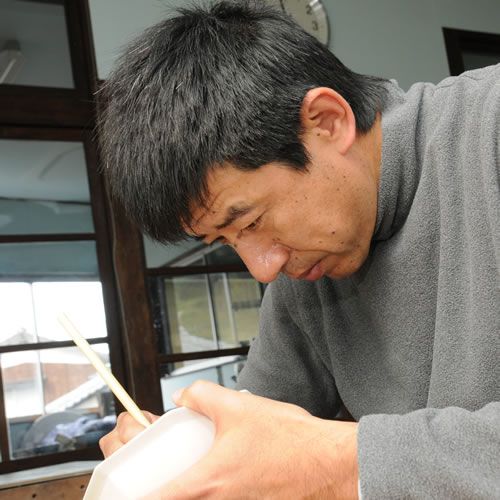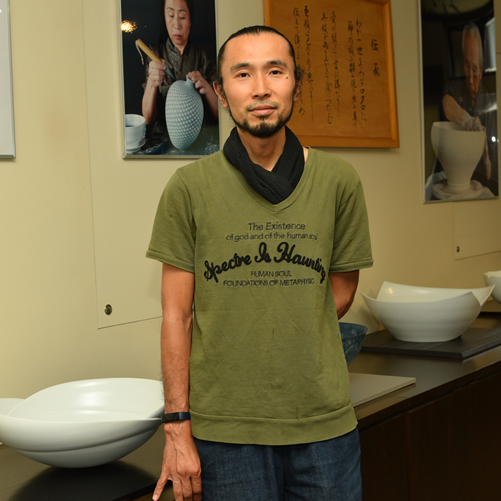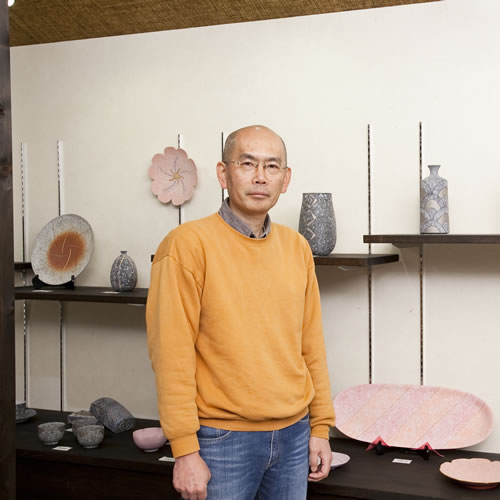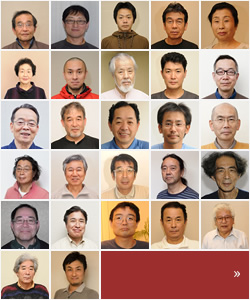TOP > Ceramics > Nabeshima Ware
Nabeshima Ware
Ceramics managed directly by Saga clan (Nabeshima clan) in the 17-19th century
In 1628, 20 years after the first Japanese ceramic production, the Saga Nabeshima clan founded feudal clan kiln in Iwatanigawachi in Saga prefecture. In 1661, it moved to the Mt. Minamikawahara near Sakaidakakiemon Kiln, which was inferred that the reason for the relocation was to learn the painting technique accomplished by SAKAIDA Kakiemon in 1641. After thirteen years, In 1675, it moved again to the Mt. Okawachi and settled until feudal clans were abolished in 1871.
At first, sometsuke (in underglaze blue) called "Ainabeshima" was fired, and the technique of Imari Ware was introduced. The first purpose of the feudal clan kiln managing the pottery was celadon porcelain mainly produced in China at that time. Consequently, it was highly valued in Japan. Working hard to achieve its own techniques for the celadon porcelain, the Fukuda Family played an essential role and took over the general manager of the feudal clan kiln through generations.
Fortunately, the suitable materials for celadon porcelain were discovered in the Mt. Okawachi. It was called the Nabeshima Celadon Porcelain and the blue color of Kinutaseiji is the main. Today Nabeshima Ware succeeds the tradition. OGASAWARA, Chosun is one of the renowned successors of its tradition.
Another purpose of the feudal clan kiln was to gift their own porcelain to the Emperors, nobilities, Tokugawa shogun, and Daimyo (feudal lords). It was not distributed to the public to make the pottery even more rare and precious as the gifts. The pottery gathered excellent craftsmen in order to produce high-quality ceramics. Then, the well-organized management prevented the leakage of the techniques by the strict separation of manufacturing the products. Even now, Nabeshima Ware is exquisite as the gifts, mainly the dishes of somenishiki called Ironabeshima. Its design accords with the seasons; it inspires people to appreciate the nature of beauty through seasons. Needless to say, the traditions of the Nabeshima have been prestigious and never been out of date. Eating meals with the Nabeshima for the special occasions would be invaluable. Not only noble people but the general public enjoyed having a meal together with the ceramics. The Japanese food culture was inconceivable without the ceramics.
Lately, the ceramics of the Ironabeshima are seen only at art galleries and museums for the reason of their peculiarities. As mentioned above, because of the Meiji restoration and the collapse of the feudal system, the Saga Nabeshima clan and most of the feudal clan kilns were abolished. It was told that only five or six kilns were handed down as a private kiln since the feudal clan kiln had the system for division of labor. As surviving without the patronage of the feudal load was difficult, passing their traditional techniques onto generations was not easy. However, the Imaizumuimaemon Kiln, once the director of Akaeza supported by the Nabeshima clan, was recognized as the living national treasure for the achievement of the heritable techniques for consistent production.
There are a lot of potters who practice the technique of Nabeshima Ware and making efforts to enhance it day by day. The Nabeshima is also the famous tourist resort as secret village of the kiln. The exhibition of Oshu kiln is located at the entrance of the Mt. Okawachi where many extraordinary ceramics with the heritage of Ironabeshima are displayed. Those are charm with the customers.












